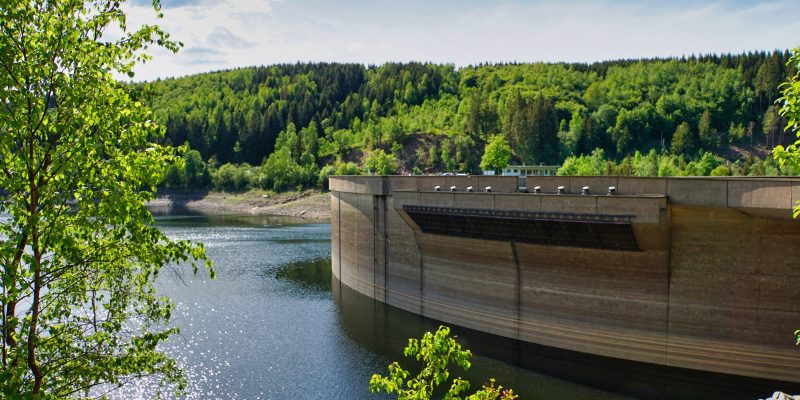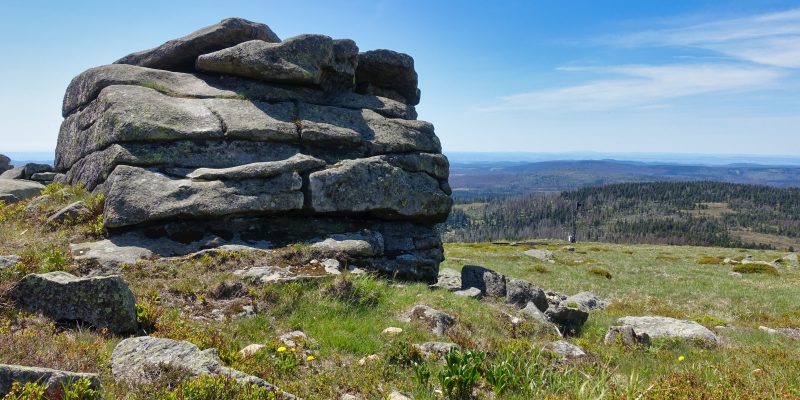The Harz is a German low mountain range that stretches across the federal states of Lower Saxony, Saxony-Anhalt and Thuringia. The largest part of the mountain range is in Lower Saxony.
The Harz is a unique natural landscape characterised by high mountains and dense forests. The highest elevation in Lower Saxony is the Wurmberg at 971 metres. In the area of Saxony-Anhalt is the Brocken with a height of 1140 metres, which is the highest elevation in the entire Harz region.
The Harz is now home to numerous wild animals again, such as the lynx, the wildcat and the capercaillie.The forests consist almost entirely of beech and spruce and are criss-crossed by watercourses.
A holiday in the Harz nature region is ideal for an active holiday. Numerous well-signposted hiking and mountain bike trails invite you to discover the region. Water sports can be enjoyed on some of the artificial lakes. In winter, cross-country ski trails, downhill slopes and toboggan runs offer holidaymakers a varied time.
Holidays in the Harz nature region

It is not far from Bad Harzburg or Torfhaus to the Oker reservoir. In the Lower Saxon district of Goslar, the Oker flows into a reservoir that is bordered by the dam.

I love the TV pictures of the Brocken, when you see the storm sweeping over the mountain top and people trying to move forward. For that reason alone, it was clear to me relatively quickly that if I'm in the Harz, I have to go to the Brocken.
Travel information
Arrival
By plane
The nearest major international airports are in Hanover and Leipzig. Both are a good 100 kilometres from the edge of the Harz Mountains.
By train
The long-distance trains of the railway, i.e. the ICE and IC trains, bypass the Harz Mountains. If you want to go on holiday in the Harz mountains by train, you have to change to regional trains. Trains leave from the long-distance stations in Braunschweig, Hildesheim, Göttingen, Magdeburg, Halle or Erfurt.
By car
The A 7, A 38 and A 36 federal motorways pass by the Harz region. Federal highways and numerous smaller and often very well developed roads lead through the mountain range.
By bike
The EuroVelo 13 (Iron Curtain Trail) and the European Cycle Route R1 (EuroVelo 2) run through the Harz Mountains.
On the way in …
With the bus
With the Harz holiday ticket and the registration form, overnight guests can use the regional bus network free of charge.
By train
The Touristikbahn, a partly steam-driven Harzquerbahn, connects Wernigerode with Nordhausen. The Brockenbahn also branches off from this line. The steam-powered Selketalbahn runs from Nordhausen to Quedlinburg.
In the eastern and lower Harz, the Rübelandbahn connects Blankenburg (Harz) with Rübeland.
In addition, regional trains run through the area.
By car
Some of the smaller villages or smaller starting points of hiking routes are very rarely reached by public transport. Here, the car is often the only sensible alternative.
On foot
The Harz is a paradise for hiking enthusiasts. Numerous very well signposted trails lead through the entire region.
By bike
In addition to the national cycle routes Euro Velo 13 and 2, you will find well-signposted cycle paths in the Harz Mountains.
There are specially signposted trail routes for mountain bikers.
Best time to Travel
The Harz Mountains are worth a visit at any time of year. However, if you plan a visit to the Brocken, you should bear in mind that the conditions here are different from those in the valley due to the altitude. The mountain top is often shrouded in fog and the average annual temperature is 2.4 degrees. It can be quite cool on the mountain even in high summer.